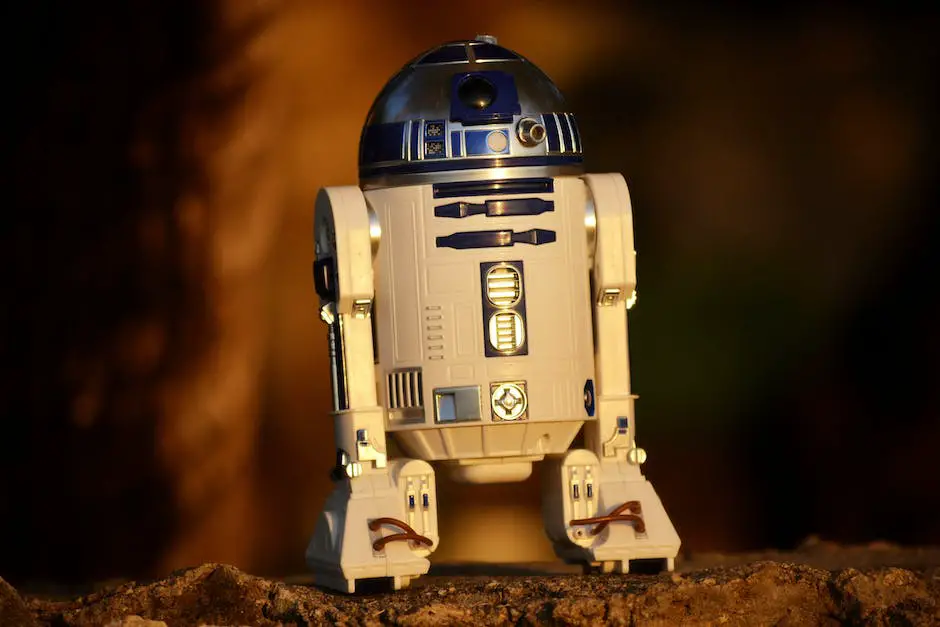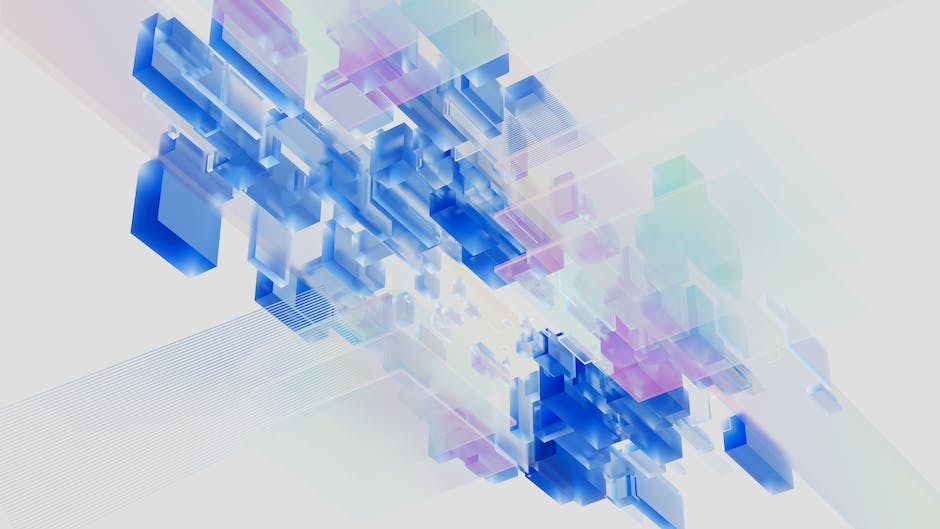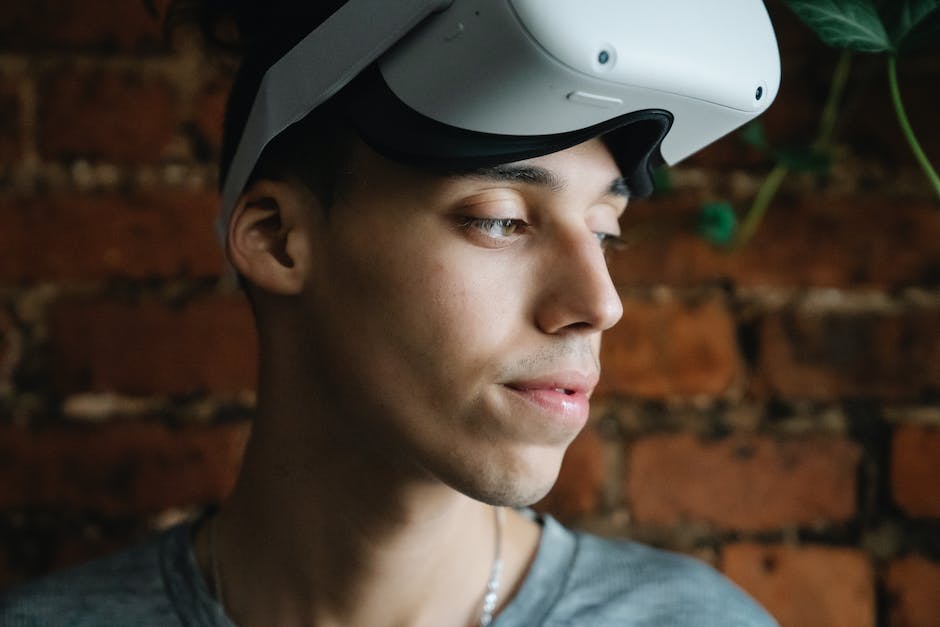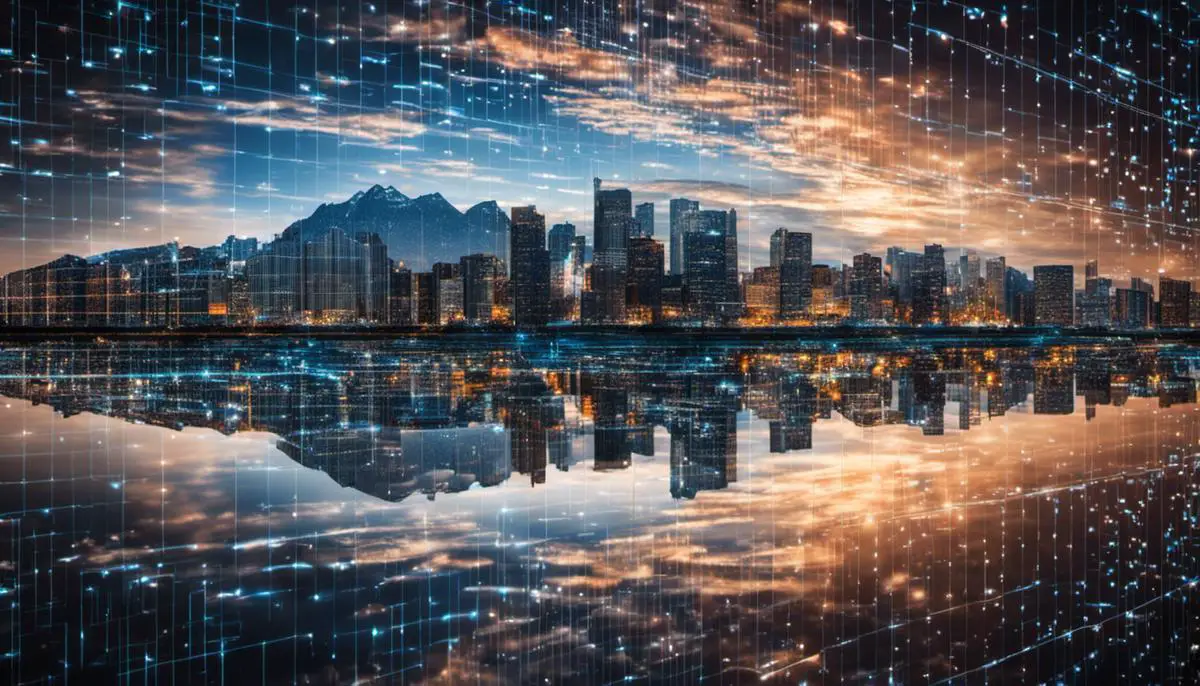In the ever-evolving field of technology, Artificial Intelligence (AI) has surged ahead as one of the leading trends, carving a distinct niche for itself with AI-generated imagery. This captivating domain of tech blends the realm of visuals with the power of AI, paving the way for a plethora of innovative applications and possibilities.
AI-generated imagery is altering paradigms, seamlessly merging the prowess of neural networks and deep learning to create spectacular, simulated representations. When leveraged appropriately, these AI-sculpted images can have far-reaching impacts, spanning across various industries and revolutionizing the way we portray and perceive our world.
Contents
- 1 Basics of AI-Generated Imagery
- 2 The Technology Behind AI-Generated Imagery
- 3 Creating AI-Generated Images
- 4 Ethical and Legal Implications
- 5 Future Trends and Opportunities
- 5.1 The Rise of AI-Generated Imagery
- 5.2 Potential Opportunities
- 5.3 Challenges Ahead
- 5.4 Future of AI-Generated Imagery in Different Industries
- 5.5 Revolutionizing Entertainment
- 5.6 AI’s Environmental Potential
- 5.7 However, it’s essential to remember the moral and ethical issues surrounding AI-generated imagery.
Basics of AI-Generated Imagery
What is AI-Generated Imagery?
AI-generated imagery refers to a subset of artificial intelligence (AI) that leverages algorithms and machine learning models to create visual content. This includes images, animations, and even virtual reality simulations.
These AI models are trained on large datasets of existing images and use that information to generate new, original works. Lot of AI-generated imagery utilizes an advanced type of machine learning known as Generative Adversarial Networks (GANs). The GAN model is composed of two parts: a generator, which creates images, and a discriminator, which evaluates these images based on the data set it was trained on.
How Does AI-Generated Imagery Work?
At a fundamental level, AI-generated imagery works by simulating the human process of creating visual art. AI does this through algorithms that allow the system to ‘learn’ from vast amounts of data. The AI model then uses what it learned to generate new images. It’s similar to how an artist might draw inspiration from their environment or previous works of art and then pour those inspirations onto a canvas.
Take a Generative Adversarial Network (GAN) model for instance, which is often used in AI art creation. The model has two roles: the generator, which creates the images, and the discriminator, which judges the images.
The generator starts by creating random images, the discriminator then judges these images based on how similar they are to the training set. The generator then uses the feedback from the discriminator to refine its next images, and this process continues until the discriminator can’t tell the difference between the AI-generated images and the real images.
Real-World Applications and Examples of AI-Generated Imagery
AI-generated imagery has a wide array of potential applications. It’s used to create realistic video game graphics, virtual reality simulations, special effects in movies, and even creating digital influencers on social media.
DeepArt and DeepDream are examples of AI that create visually stimulating images and modifications. DeepArt transforms user-uploaded photos into the styles of famous artists, while DeepDream modifies images to bring out the patterns and shapes learned by the AI. Another noteworthy application is DALL-E, an AI program developed by OpenAI which generates images from text descriptions.
Understanding the Merits and Drawbacks of AI-Generated Imagery
Much like any significant technological progress, AI-generated imagery boasts a diverse range of benefits and limitations. On the one hand, it facilitates the production of stunning, unique visuals that are often impossible or highly challenging to conjure manually. It also brings about substantial efficiencies in content generation across multiple industries, including entertainment, advertising, fashion, and architecture.
On the other hand, there are legitimate concerns. As AI-crafted visuals become increasingly prevalent and lifelike, worries about the rise of deepfakes – visually convincing yet entirely fabricated images and videos – have grown. Questions surrounding authenticity, originality in the creative careers, copyright, and ownership issues concerning AI-generated art or visuals begin to surface as well. Furthermore, the technological progression brings with it potential threats to jobs in sectors like graphic design and photography.
In essence, while AI-generated imagery is brimming with potential and broad applicability, it is not without its set of ethical dilemmas and hurdles that warrant careful consideration.

The Technology Behind AI-Generated Imagery
The Role of Neural Networks and Deep Learning in AI-Generated Imagery
In the sphere of digital interaction, Artificial Intelligence (AI) has played a transformative role, notably in the field of imagery. This change hinges heavily on the technology of neural networks and deep learning, the backbone of AI-generated imagery.
At the most basic level, a neural network replicates the functionality of the human brain, enabling machines to learn from data observation. Deep learning, which is a derivation of machine learning, employs these neural networks to develop and improve algorithmic models with the capacity to interpret data patterns.
Creating AI-Generated Imagery
AI-generated imagery typically begins with a series of random pixels, considered as the input layer in a neural network model. Deep learning algorithms then compile this information, layer by layer, by adjusting the mathematical weights assigned to the pixels in the image.
This act of ‘training’ the algorithm enables it to recognize and replicate specific structural or aesthetic patterns. After going through this series, the algorithm can generate new images that reflect the learned patterns.
Generative Adversarial Networks (GANs) is a popular AI technique used in image generation. It involves two neural networks – a generator and a discriminator – that work against each other (hence the term, ‘adversarial’).
The generator creates a new image, the discriminator evaluates its authenticity, and the generator improves based on the discriminator’s feedback. This cycle continues until the generated image is nearly indistinguishable from the original training image.
Advancements in AI-Generated Imagery
In recent years, advancements in AI-generated imagery have been exponential. In early iterations, the AI-generated images, though impressive, were fairly easy to distinguish from the real ones. They had certain attributes, like unrealistic textures or awkward shapes, which made them stand out.
However, with advancements in algorithmic models and computational powers, modern deep learning techniques have improved significantly. This progression lead to the development of more realistic AI-generated images. DeepArt and DeepDream are two such examples where AI-generated images are nearly indistinguishable from those created by human artists.
Moreover, in 2018, an AI-generated portrait was sold at Christie’s auction for $432,500, demonstrating the growing acceptance and recognition of AI in the world of art and illustrating how the technology has crossed the threshold into realism.
To encapsulate, the production of AI-Generated Imagery relies on an intricate series of steps enabled by neural network and deep learning technologies. This process makes use of Convolutional Neural Networks (CNNs), deep learning algorithms, and Generative Adversarial Networks (GANs) to create images that either closely resemble a real-world depiction or embody an artist’s conceptual design. As these technologies persistently evolve, we can anticipate witnessing a significant advancement in the domain of AI-generated imagery.

Creating AI-Generated Images
Comprehending AI-Generated Imagery
The generation of AI-directed imagery involves the incorporation of techniques that rely on artificial intelligence to create images that replicate real-life illustrations with striking realism. This discipline utilizes the prowess of deep learning and artificial neural networks, surpassing the boundaries of traditional computer-generated graphics and creating a more convincing representation of reality.
Training an AI Model
Before creating AI-generated imagery, it is necessary to train an AI model. Training means teaching an algorithm to learn patterns which can later be used to make predictions or decisions without being specifically programmed to perform the task.
The first step in training an AI to create imagery, you need a dataset comprising thousands of reference images that closely resemble the kind of images you would want your AI to generate. You feed these images to the AI, allowing it to understand and learn the patterns, textures, colors, and other aspects intrinsic in the images.
Another practical approach is the use of Generative Adversarial Networks (GANs), a type of AI model that is exceptional at producing human-like synthetic imagery. GANs consist of two parts: the generator, which produces the images, and the discriminator, which assesses the images for authenticity.
Tools and Resources for AI-Generated Imagery
There are numerous tools that you can use for AI-generated imagery including Runway ML, DeepArt, Daz 3D, Artbreeder, DeepDream Generator, and more. These platforms generally offer user-friendly interfaces that don’t require extensive technical expertise, making digital image generation highly accessible.
In terms of resources for learning, there are online platforms like Coursera and Udemy which offer courses on AI and machine learning. Websites like Towards Data Science, Medium, and arXiv also publish numerous articles and research papers on the subject.
Factors to Consider
While plunging into the world of AI-generated imagery, it’s essential to consider the ethical implications. Artificial intelligence has the capability of generating deepfakes – media that can misrepresent reality and spread misinformation. Adhering to responsible usage guidelines, including ensuring consent from individuals if their likeness is used for training data, is crucial.
Also, remember that the quality of your output is directly proportional to the quality and volume of your input. If the model is trained on low-quality images or a limited number of images, the generated imagery might not be of high quality or varied enough.
The realm of AI-generated imagery is a unique blend of artistic creativity and technological advancement. By mastering the complexities of AI and adhering to the ethical guidelines of its application, you can utilize this tool to construct realistic, intricate, and virtually indistinguishable synthetic images. The journey to refinement in this art might demand substantial patience and continuous practice, yet the eventual outcomes are unquestionably rewarding.
Ethical and Legal Implications
Evolution of AI-Generated Imagery
The progression of artificial intelligence (AI) technology has spurred the expansion of AI-generated imagery into diverse sectors such as entertainment, advertising, video games, and journalism. This innovation employs algorithms and machine learning principles to generate realistic images from a blank canvas or to modify existing ones.
Consequently, these illustrations are made to appear as if they were either photographed by a camera or designed by an artist, thus obscuring the distinguishing boundary between digital alteration and actuality.
The Ethical and Legal Implications
Alongside the benefits of AI-generated imagery, however, are potential ethical and legal implications. As AI technologies automate creative tasks, one area of concern is privacy and consent. For instance, AI can generate convincing images of people who never existed or create “deepfake” videos of real individuals saying or doing things they never did. Such instances can infringe on an individual’s consent or privacy, especially if they misrepresent, defame, or otherwise harm the person.
Another ethical issue is the potential for AI to mimic people’s styles or specific creations, potentially violating copyright laws or disrupting the livelihood of artists. The concept of computer-generated art also poses a conundrum – if an AI-generated image is sold as art, who owns the artistic license or copyright: the designer of the AI system, the owner of the AI, or the AI itself?
AI and Copyright Issues
Expanding on the legal front, copyright law hasn’t quite kept pace with the speed at which technology is advancing. The creation of AI-generated works could raise questions about originality, authorship, and ownership. Many jurisdictions across the globe traditionally require a human author to attribute copyright to a work. However, AI-generated imagery challenges this notion as AI, despite being a creation of humans, lacks legal personhood. This raises concerns about who truly holds the responsibility and rights to AI-generated works.
Transparent Use of AI Imagery
Given these issues, it is important to advocate for the transparent and fair use of AI-generated imagery. Implementing regulatory measures to protect individual’s privacy and to guard against deceit and misinformation are paramount. Transparency in the use of AI-generated content can be encouraged by watermarking or tagging AI-generated images/videos. Also, the users of AI ought to obtain prior consent when using real individual’s data or likeness.
Anticipating the Future
As artificial intelligence becomes more pervasively integrated into our societies, it’s vital to comprehend that AI’s potential can be a mixed blessing. It harbors immense capabilities for generating photographic and video content, yet concurrently triggers salient ethical and legal implications. The rapid achievements in AI-generated imagery necessitate an in-depth examination of our legal, ethical, and societal frameworks to guarantee the judicious and responsible utilization of this technology.

Future Trends and Opportunities
The Rise of AI-Generated Imagery
The unceasing improvement of machine learning algorithms and artificial intelligence has paved the way for the advent of AI-generated imagery. This state-of-the-art technology employs generative adversarial networks (GANs) – a pair of AI models engaged in a cooperative cycle to generate increasingly realistic images. One AI model is tasked with image creation, while the other evaluates these images for authenticity, fueling a process of refinement and improvement, and resulting in more convincingly realistic visuals.
Potential Opportunities
The far-reaching implications of AI-generated imagery open up a world of potential opportunities. Advertisers can tailor images to specific viewers, fabricating personalized marketing campaigns. Filmmakers and video game creators can use AI to produce realistic characters and settings, minimizing human intervention. Architectural firms can use AI-generated images to visualize future projects and bring blueprints to life even before construction. Digital artists can use this technology to create stunning works of art. The fashion industry can benefit from virtual models and retail companies can create ‘virtual showrooms’ for their products.
Challenges Ahead
Despite its potential, AI-generated imagery also poses some challenges. Overreliance on AI has the potential to replace human jobs in photography, design, and other creative fields. There are ethical considerations linked with deepfakes and fabricating imagery that might misrepresent or manipulate reality. This technology could also be used for ‘revenge porn’ or creating damaging false images of individuals. The challenge is ensuring its use adheres to ethical norms and legal boundaries.
Future of AI-Generated Imagery in Different Industries
The potential of AI-generated imagery to revolutionize industry practices is considerable. In healthcare, AI could be used to generate accurate imaging for clearer diagnostic insights. In the automobile industry, AI-generated imagery can be used to design more aerodynamic cars or to aid in creating realistic simulations for self-driving vehicle algorithms. Real estate could leverage this technology for creating virtual tours of apartments and homes.
Revolutionizing Entertainment
AI-generated imagery could revolutionize the entertainment industry. Movie makers can generate life-like creatures or historical figures without needing human actors. Video game developers can create realistic, immersive worlds with AI-generated environments and characters. Music videos may well become AI-generated fantasy worlds, pushing the boundaries of creativity.
AI’s Environmental Potential
In the realm of climate change and environmental studies, AI-generated imagery could be an invaluable tool. It could help predict and visualize the effects of certain environmental policies or changes, helping policymakers make more informed decisions.
However, it’s essential to remember the moral and ethical issues surrounding AI-generated imagery.
Striking a balance between innovation, practicality, and ethical use is critical for its future. It should be utilized with an understanding of its social implications, potential drawbacks, and any corresponding legal frameworks that need to be in place.

Photo by risto_kokkonen on Unsplash
The exponential growth of AI-generated imagery and the tremendous potential it holds reaffirms the significant role AI will undoubtedly play in shaping our future. Nevertheless, it is paramount to tread this path with caution, diligently considering both ethical and legal implications, to ensure that innovation does not compromise fundamental human rights.
As more advancements are made, the opportunities and challenges existing in this realm will evolve and expand, necessitating a continuous, dynamic dialogue within the technology and wider community. The future of AI-generated imagery is undoubtedly exciting and filled with promise, requiring us to attain a deeper understanding and foster responsible usage of this game-changing technology.

Emad Morpheus is a tech enthusiast with a unique flair for AI and art. Backed by a Computer Science background, he dove into the captivating world of AI-driven image generation five years ago. Since then, he has been honing his skills and sharing his insights on AI art creation through his blog posts. Outside his tech-art sphere, Emad enjoys photography, hiking, and piano.
